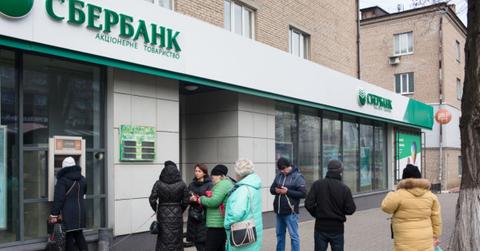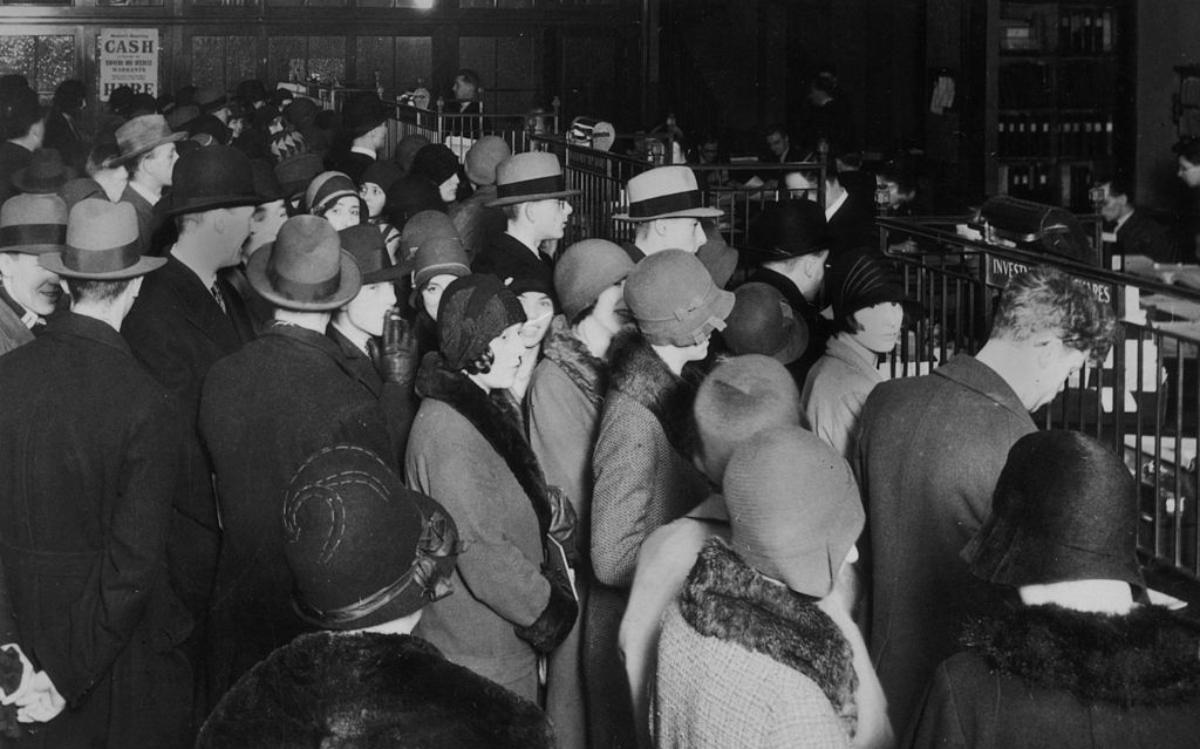Why Russians Are Lining Up at Banks: Russia Bank Run, Explained
Russian citizens, concerned about the drop in the ruble's value and consequences of sanctions against Russia, lined up at ATMs and banks in a bank run over the weekend.
Feb. 28 2022, Published 10:42 a.m. ET

Anxiety over the conflict led many Ukrainians to rush to the ATM. Now the same is happening in Russia amid the threat of more sanctions.
The Russian central bank raised its main interest rate on Feb. 28 to more than double the previous rate. Russia implemented other capital policies to minimize the effects of economic sanctions imposed by the U.S. and other nations. Over the weekend a Russian bank run started as citizens lined up to access their money, the AP reported.
Western nations are looking to restrict Russian access from $640 billion in forex and gold reserves and cut the nation off from the SWIFT network. Although the Bank of Russia insisted that it can maintain financial stability, émigré Russian economists warned Putin in an open letter of major economic costs to Russia if he doesn’t end the war with Ukraine.
Why are Russian citizens lining up at ATMs?
In the wake of the Russian invasion of Ukraine, the value of the Russian ruble against the U.S. dollar dropped by about 30 percent. Western nations’ aims to restrict Russian access to the SWIFT financial network and hundreds of billions in foreign currency reserves led citizens to anxiously wait outside banks and ATMs.
A bank run, in general, is when an unusual number of customers of financial institutions withdraw their funds at the same time due to concerns of potential insolvency. The situation often escalates as more people panic, which creates the conditions where the bank or institution could actually default due to insufficient cash on hand.

Bank customers around 1929 line up to withdraw funds.
For some, the U.S. stock market crash of 1929 might come to mind, when numerous banks experienced runs on their funds.
In Russia, reports on social media have circulated of lines around the nation at ATMs and banking institutions. Russians are worried about inflation and a drop in standard of living, which explains the rush to withdraw funds from financial accounts.
Russia raised its interest rate from 9.5 percent to 20 percent.
The central bank raised the nation’s benchmark interest rate to 20 percent, more than twice the previous 9.5 percent rate. This was a response to the sharp decline in the ruble, as the Russian government attempted to prevent a run on the banking system.
Politico also reported over the weekend that Russian private banks were warning customers that digital payment apps Google Pay and Apple Pay were non-functional, so they would depend on cash and local cards for everyday spending. People also increased retail spending, perhaps in preparation for a reduction in currency value due to inflation.

Payment apps like Google Pay and Apple Pay will not work for customers in Russia.
Western leaders hope sanctions and other fiscal restrictions will pressure Putin to withdraw from Ukraine.
President Biden and leaders from the U.K., the European Union, and Canada have banded together to try to prevent Russia from accessing about $630 billion–$640 billion in international reserves. Those international reserves are what Russia would have relied on to prop up the value of the ruble.
Politico reported that the Bank of Russia’s official statement on Feb. 27 was optimistic, claiming the bank has “the necessary resources and tools to maintain financial stability and ensure the operational continuity of the financial sector.”
However, émigré Russian economists warned Putin in a letter of its dire predictions if the conflict continues and he doesn't end his war with Ukraine. “The economic cost to Russia will be an order of magnitude greater than the lost opportunities in the previous decade of economic stagnation,” they stated.
